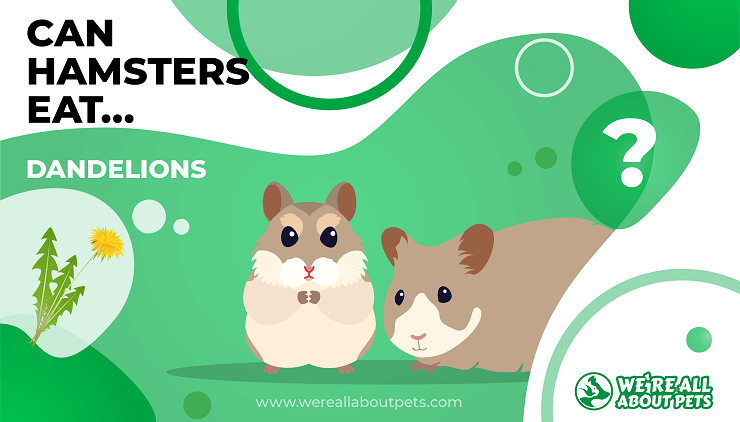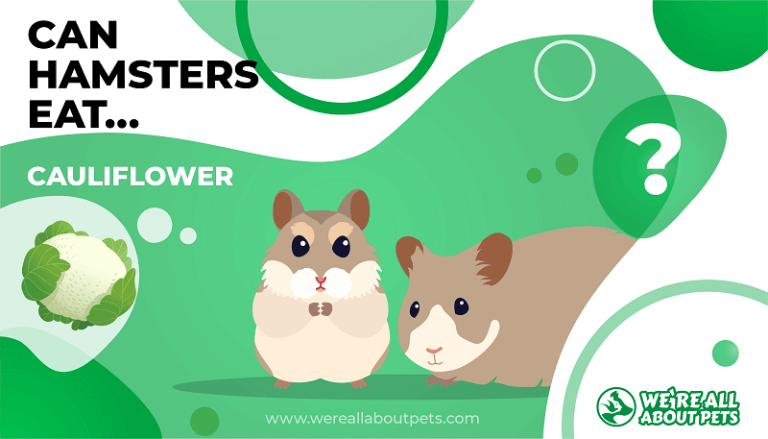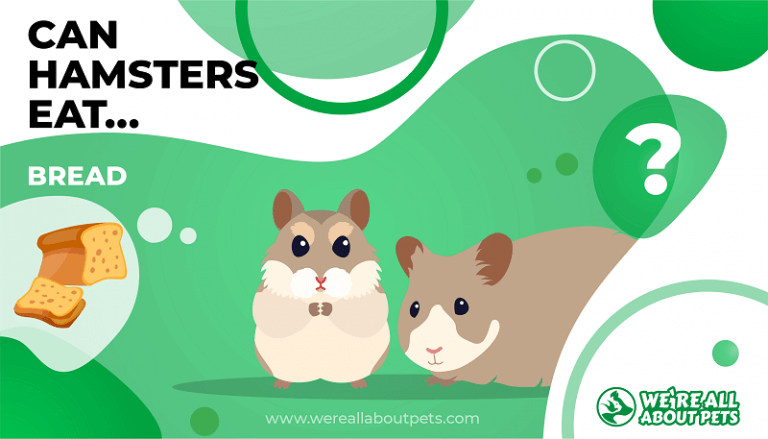Can Hamsters Eat Apples?
This page contains affiliate links. We may earn money or products from the companies mentioned in this post through our independently chosen links, which earn us a commission. Learn More
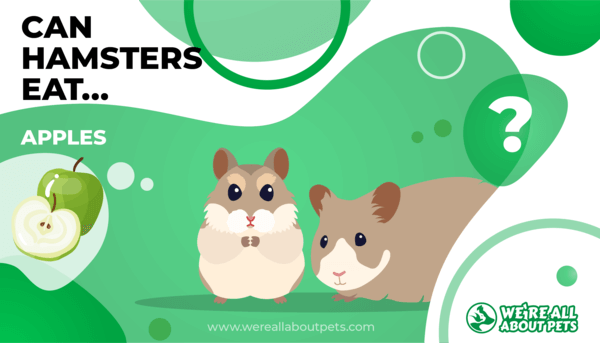
Apples are such a healthy fruit that there’s even a saying about them: “An apple a day keeps the doctor away!”
But are apples good for hamsters? And, if you can give a hamster apples at treat time, just how much should you offer?
The good news is that it’s perfectly fine to give apple to a hamster – but there are definitely some things to keep in mind before you treat them to this sweet, crunchy snack.
Keep on reading: In just a few minutes, you’ll know all about apples for hamsters.
Apple Nutrition Stats
Apples top the list of “good for you” fruits for a reason: They’re high in fiber, relatively low in sugar, and pretty low in calories, yet they’re very satisfying.
A medium apple offers an average of:
- 72 calories
- 19 g carbohydrates
- 3 g fiber
- .36 g protein
- .2 g fat
Apple Nutritional Facts
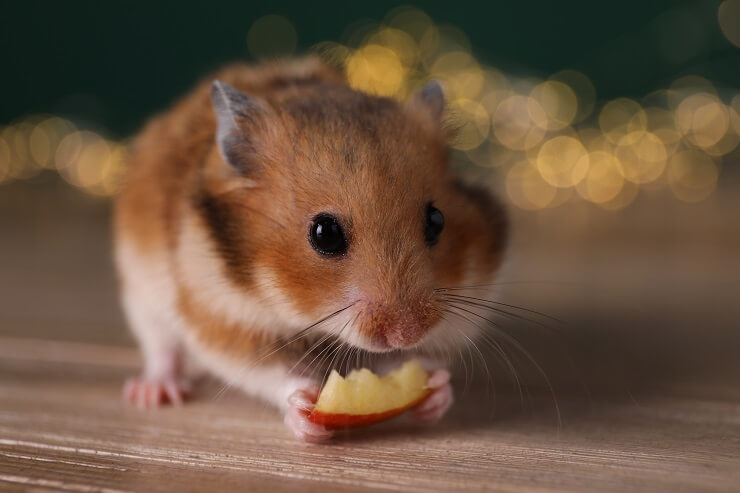
Just like you, hamsters need plenty of vitamins and minerals – preferably from natural sources.
Apples are a great source of nutrients, with one medium-sized fruit providing:
- 3 mg vitamin C
- 75 iu vitamin A
- 148 mg potassium
- 8 mg calcium
- 1 mg magnesium
- .17 mg iron
- vitamin B1 – trace
- zince – trace
- vitamin B2 – trace
- niacin – trace
- vitamin B6 – trace
- manganese – trace
- vitamin K – trace
- phosphorous – trace
Can Hamsters Have Apples?
Yes -and your hamster will probably love every moment spent nibbling on this juicy fruit. You’ll want to take special care when preparing apple for your hamster – scrub it well before you cut it up.
Do this even if you’re offering organic apple, since traces of dirt might still be on the skin.
Be sure to remove the stem and seeds from the piece of apple you give to your hamster. These contain traces of cyanide – not enough to harm you, but enough to potentially hurt your hamster.
Additionally, these can be very sharp, and you don’t want them accidentally ending up stuck in your hamster’s pouch.
Are Apples Good For Hamsters?
Since they’re such a great source of nutrition, apples are very good for your hamster. If you’ve only recently brought your pet home though, you’ll want to be careful about introducing fruit and vegetables since rapid dietary changes can cause diarrhea, leaving your pet uncomfortable and dehydrated.
Once your hamster is accustomed to apple though, you can make it part of their regular diet!
Do Hamsters Like Apples?
Whether you’ve got a teddy bear hamster, a dwarf hamster, or another breed entirely, your pet will probably go crazy for apples. Be sure not to give them too much at once, though!
How Much Apple Can A Hamster Eat?
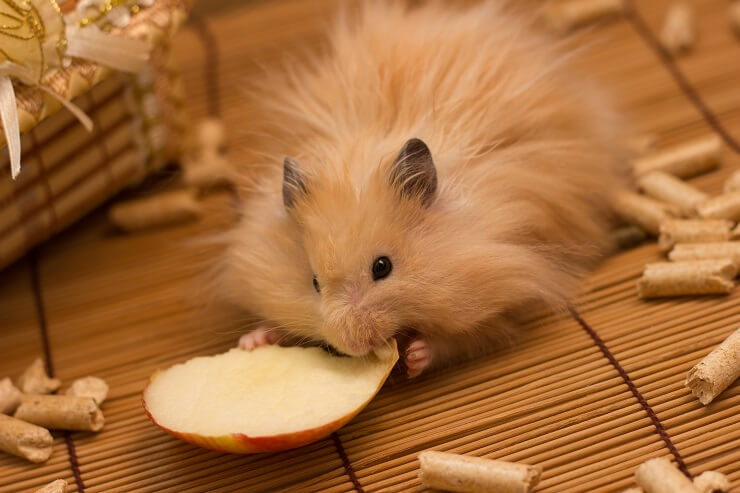
So, is there such a thing as too much when it comes to apples? That’s a definite yes – although your pet might disagree.
Here’s how much apple a to feed your hamster:
| Age | Amount |
| Baby hamster | None |
| Adult hamster | 1 or 2 ½ inch squares of apple |
If your hamster eats too many sugary foods, there’s a risk of diarrhea and an upset tummy. If your hamster normally eats fruit, it’s fine to offer the full amount of apple right away – if this is their first time, though, you’ll want to introduce it gradually.
Start by offering half of a ½-inch apple square. That’s basically a small sliver of apple – just enough for a quick (but enjoyable!) nibble. Don’t offer any more – even if your hammy is begging for it!
Keep an eye out for any signs of digestive trouble including diarrhea. If everything is normal, go ahead and give your hamster a ½ inch apple square next time their feeding schedule calls for fruits or vegetables.
You can double the amount the third time you offer it, if you like. Make sure to read the next section carefully since it determines how often to feed apples (and other produce) to your hamster!
How Often Can A Hamster Eat Apples?
Your pet might like to eat apples every day and eventually, you can go ahead and offer some kind of fruit on a daily basis.
Apple is a good choice, but it’s best to provide plenty of variety!
- If your hamster has just come home from the pet store, this is probably their first introduction to fresh food, and you’ll want to take things slowly. Offer only a tiny amount of fruit and/or vegetables every other day for the first week. You can gradually increase from there so long as there are no signs of diarrhea.
- If your hamster already eats vegetables and fruits, it’s OK to give them a tiny bit of apple every day if they tolerate it well the first time. Just don’t offer apple the same day that you offer other fruits unless you’re offering a tiny bit of different items to make up a single complete serving.
The Correct Diet is Important
A hamster’s natural diet is pretty impressive – these cute little animals are omnivores!
They are capable of eating insects, eggs, and even other animals, so you might want to consider offering a few dried mealworms or a tiny bit of cooked egg or cooked chicken from time to time even though properly balanced hamster pellets provide the protein your pet needs.
Now that we’ve gotten this out of the way, let’s cover the “fun” part!
Besides a daily serving or two of hamster pellets, you’ll want to offer:
- Unlimited Timothy hay for nibbling, tunneling, and nesting.
- A small amount of birdseed; about a teaspoon per week.
- Tiny amounts of fruit and vegetables offered at intervals that encourage your hamster to eat their treats right away. Don’t offer lots of fresh food at once, as your hamster’s natural instinct to store food in their habitats could lead to a moldy cache that puts your hamster’s health at risk.
- Unlimited amount of clean, fresh water; be sure to rinse and refill your hamster’s drinking bottle at least once a day.
Last but not least, be sure that you offer chewable treats and hamster toys such as hay cubes, untreated softwood branches, coconut shell, or unbleached loofah. Chewing is an important natural behavior and without plenty of things to gnaw and nibble, your hamster’s teeth are likely to become painfully overgrown.
What Are Other Healthy Alternatives To Apples In A Hamster’s Diet?
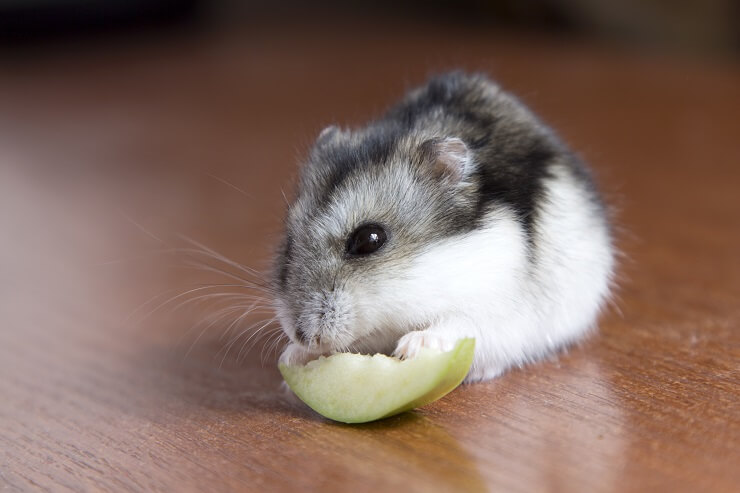
Like other small rodents, hamsters eat all kinds of things in their natural habitats. They really enjoy a wide variety of fruits and veggies, so there are plenty of options available.
Here are some veggies hamsters like most:
- asparagus
- baby corn
- artichoke
- sweet corn
- cabbage
- basil
- cilantro
- mint
- parsley
- carrot
- carrot tops
- romaine
- potato (cooked only)
- beets
- beet tops
- sprouts
- arugula
- swiss chard
- spinach
- endive
- escarole
- butter lettuce
- bibb lettuce
- rocket
- buttercrunch lettuce
- green beans
- cucumber
- summer squash
- winter squash
- pumpkin
- bell pepper
- zucchini
- celery
- parsnip
- sweet potato
- tomato
- broccoli
- broccolini
- cauliflower
- okra
- bok choy
- yu choy
- watercress
The odds are quite good that if a certain vegetable is good for you, it’s also good for your hamster!
At the same time, there are a few foods that are toxic to hamsters so you’ll want to research every new food you’re considering to make sure that it’s a safe treat, and to find out how much you should offer.
Giving your hamster apples (in tiny amounts!) is a nice way to add variety to their diet.
Frequently Asked Questions
Are apples safe for hamsters?
Yes! So long as you remove the stems and seeds, and so long as you wash the apple well, it’s OK to give apple to a hamster.
Can apples make my hamster sick?
It’s possible that apples could cause diarrhea if your hamster isn’t accustomed to fresh foods and sweet fruits but it’s not very likely so long as you’re careful when introducing apple to your hamster’s diet.
Keep in mind that too much fruit can lead to obesity and diabetes. Apples and other sweet, natural treats are best offered in very small amounts, and shouldn’t make up a large portion of your pet’s daily intake.






